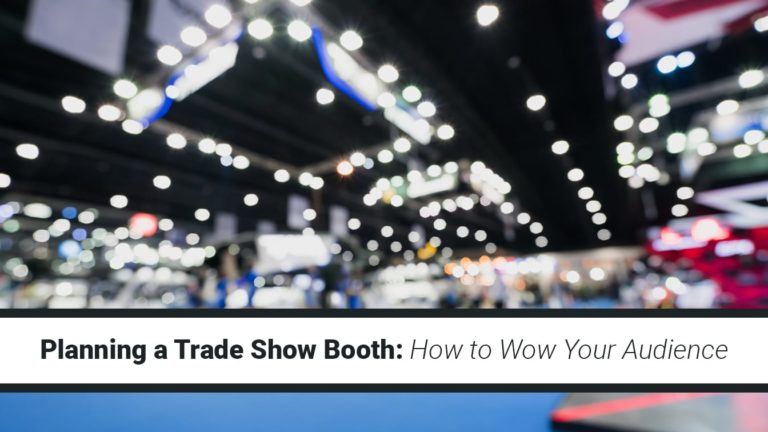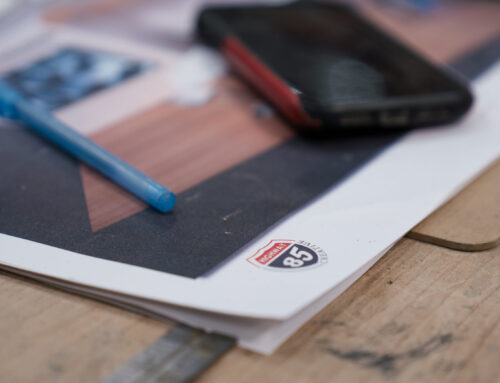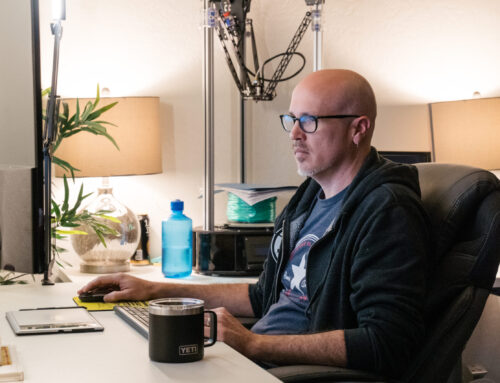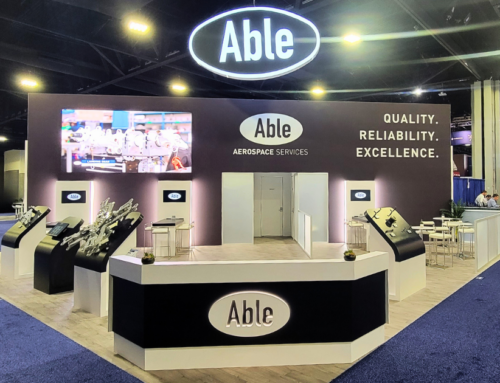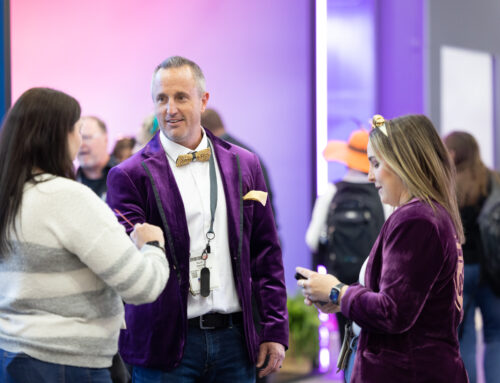Exhibiting at a trade show represents a hefty investment in time and money. Nimlok describes trade shows as an one-of-a-kind marketing opportunity to showcase your products and capabilities and engage face-to-face with prospects.Obviously, you want that investment to pay off. Luckily, with killer booth design, a bit of planning, and a solid understanding of trade show best practices, you seriously increase the odds of success.
Use Eye-Catching Design
You know what they say about first impressions and second chances. Your exhibit has literally seconds to grab the attention of trade show attendees and draw them into your booth. With great design, you can make a great first impression, even if an pop up display is outside your current means. This means an integrated color palette (preferably using colors from your company logo), quality graphics, good lighting, signage, and, of course, a unique, imaginative design that represents your brand and its story.
When designing your booth, you have to know what your goal is. Why are you at this trade show? Are you building brand awareness? Launching a new product? Developing customer relationships? Your goal helps create your story and your exhibit tells it. Defining both ensures your booth’s design does its job.
Interact with Your Audience
A great booth grabs your audience’s attention and then holds it. Even better? Crowds tend to attract crowds, so the longer you engage your leads, the better. If your product or service is naturally interactive, this is simple. If not, you need to get creative. Touch screen kiosks are always popular, but so are unusual or unique booths. For example, when Best Western wanted to introduce customers to their new high-tech, high-gloss design, we created a hotel room right on the display floor. This is an excellent example of how you can define your space to build your brand.
Planning for Your Trade Show Booth
Hopefully, you have a decent amount of lead time to help with planning and preparation. This is especially important when it comes to your location. Prime locations – those along main aisles, near the entrance, and toward the center – tend to sell out early, even as much as a year ahead of time. When negotiating your contract, don’t forget to address location. And, if you plan to exhibit multiple years, make sure you address this during negotiations, as it strengthens your position.
Trade shows are also a great place to meet with current and potential clients. About a month before the show, set appointments instead of waiting for the event itself. Even if you don’t know the lead is planning to attend, give him or her a call or send an email. They may jump at the chance to attend an industry event. It could even be the final push that turns your prospect into a customer. A typical goal for many trade show veterans is setting enough appointments to cover the cost of your booth.
Note: when setting appointments, offer a clearly stated time and place to meet. Things tend to get hectic at a trade show, so no vague promises to meet for lunch one day. Instead, name a specific location and time.
Choose the Right People to Staff Your Booth
This should be obvious, but it’s astonishing how many trade show booths you see with staff sitting behind a table, playing on a phone, or doing pretty much anything other than interact with attendees. Even worse are all of the empty booths you see because the company failed to pull in enough staff and everyone needs a bio break at some point.
Ideally, your booth team stays on their feet, willingly introduces themselves to attendees as they pass (rather than wait for people to enter the booth), and works to divert traffic to your exhibit. That doesn’t mean being aggressive or rude, just approaching people as they pass. If you have great giveaway items, this is much easier. Of course, you can rely on the old standby – pens – but choosing something relevant to your company and your booth (that story you’re telling), is much more powerful. If nothing sticks out as an obvious giveaway choice, go with what’s popular: food and beverages. Gourmet chocolates and bottled water (with your logo or business card attached of course) are always big winners.
You can also come up with different giveaway levels, say small promo items to draw people into the booth, something a little nicer for warm leads who listen to a presentation, complete a contact form, or hand over a business card, and a grand prize for a drawing that includes the names of all of those warm leads.
A key component of effective booth staff is training. You want a team who can answer any question, who understands your story, can explain your brand succinctly, and knows the goal of your booth. If you’ve hosted a booth in the past, make a list of the questions attendees asked to help staff prepare answers. There’s nothing wrong with a scripted introduction or answer, especially if it gets the job done. At the end of the day, have a team debrief. Discuss what worked, what didn’t work, get everyone’s feedback, and take excellent notes. This stuff will come up again.
Follow Up On Those Leads
For the best results, follow up on leads immediately. Take a walk to the closest meeting room if possible. If not, set an appointment while you’re both still at the show. At a bare minimum, scan that lead’s business card information and follow up with an email. Then, connect with them on Facebook, Twitter, LinkedIn. When you’re back in the real world, make the call. If you turn enough of those leads into customers, you more than pay for the booth.
Are you ready to design the perfect booth? Highway 85 Creative offers a variety of design services, including pop up displays and custom booths. Contact our design team today to get started.
